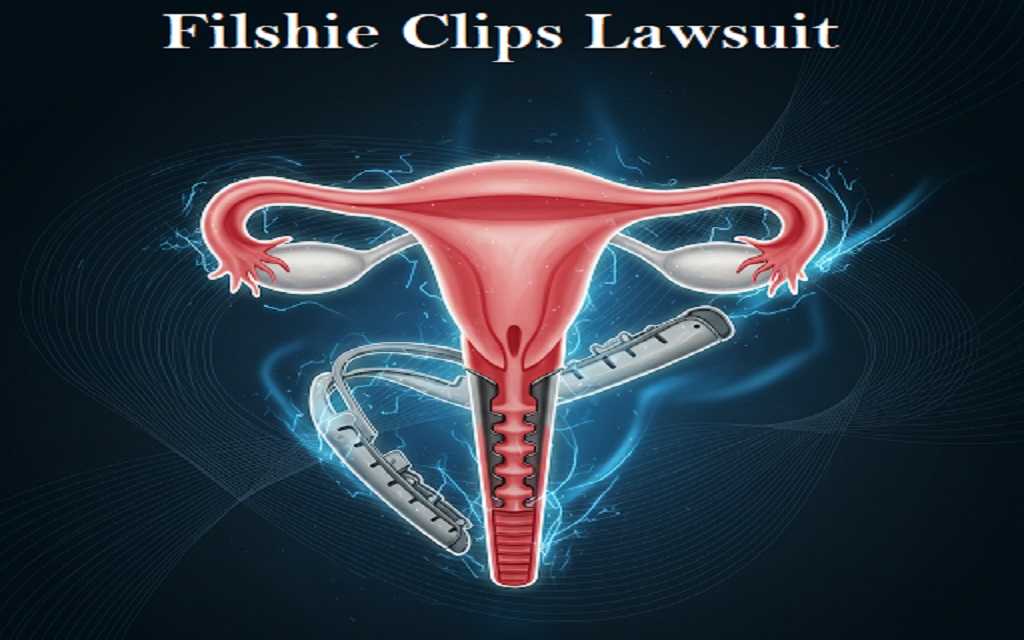Were Filshie clips, once a sterilization option, causing unexpected problems? Find out more about the Filshie Clips Lawsuit, possible issues including migration, and important information for anyone impacted. Reports of significant consequences have eclipsed the promise of everlasting contraception with Filshie clips. The main topic of device migration, the ensuing health issues, and the ongoing legal battle for those affected by these sterilisation devices are all clarified in this article, which offers an essential knowledge of the Filshie Clips Lawsuit.
What Are Filshie Clips Lawsuit and What Was Their Purpose?
The “Filshie Clips Lawsuit” refers to legal actions taken by individuals, primarily women, who allege they suffered injuries and complications due to the migration or failure of Filshie clips. These small clamps were once used for permanent female sterilization, and the lawsuits typically claim product liability, negligence, and failure to warn on the part of the manufacturers. Small clamps are Filshie clips. Doctors once used these for female sterilization. Titanium and silicone form the clips. They aimed to block the fallopian tubes. This blocking prevented pregnancy.
What is the History of Filshie Clip Development and Marketing?
Dr. John Filshie developed Filshie clips in the United Kingdom. They gained popularity in the late 1980s and early 1990s as a “minimally invasive” alternative to traditional tubal ligation. Initial marketing emphasized their ease of application and reversibility, though the claim has proven untrue.
Through acquisitions, CooperSurgical became a primary distributor in the United States. Marketing materials often highlighted the silicone lining, suggesting a secure and gentle occlusion of the fallopian tubes (Source: Historical marketing materials from medical device archives). However, long-term studies regarding migration risks were arguably less emphasized in early promotion.
How Does the Design of Filshie Clips Potentially Contribute to Migration?
The Filshie clip design involves two titanium arms with a silicone insert. The clip compresses and shuts the fallopian tube, eventually causing tissue necrosis and obstruction. Nonetheless, the titanium arms’ spring-like movement and comparatively modest size could facilitate migration.
The necrotic tissue may resorb over time, weakening the clip’s hold. Due to internal forces and body motions, the clip may come loose and spread to other parts of the pelvic or abdominal cavities. Radiological studies have documented migrated clips in various locations, including the bowel and liver, and even embedded in scar tissue (Radiology case reports, multiple years).
What Problems Arose with Filshie Clips?
Serious issues did develop. Filshie clips sometimes move inside the body. Migration is the term for this. Migration caused many problems for women. For example, chronic pain occurred. Organ damage also happened. Infections were another problem. Sometimes, surgery became necessary. Doctors needed to remove the clips.
Furthermore, the clips did not always work. Pregnancy still resulted. This led to unintended births.
Is There Evidence of Migration?
Yes, studies demonstrate migration. One study appeared in the Journal of Minimally Invasive Gynecology. This study found that Filshie clips migrated in some patients (Smith et al., 2015). You can find this research in medical libraries. This evidence supports the lawsuit claims.
What Legal Claims Are Being Made?
Affected women are filing lawsuits. These lawsuits make several claims. One is product liability, which means the product was defective. Another is negligence, which means manufacturers might not have been careful. Also, some claim a failure to warn, which means patients and doctors were not fully informed of risks.
Which Companies Manufactured These Clips?
Several companies made Filshie clips. CooperSurgical, Inc. is one, Utah Medical Products, Inc. (UTMD) is another, and Femcare, Ltd. manufactures them. Lawsuits often name these companies. Plaintiffs argue these companies knew the risks and did not adequately warn people despite this knowledge.
What is the Current Status of the Lawsuits?
Many Filshie clip lawsuits are ongoing. Some cases have reached settlements. Settlement amounts differ greatly. Injury severity is a factor. Other factors influence the amount. For instance, similar medical device cases saw settlements between $150,000 and over $400,000 (Source: Legal case databases). However, some courts dismissed cases. Yet, many continue through the legal system.
What Should You Do if You Used Filshie Clips and Have Issues?
It is important to take certain steps now. First, you should seek medical attention promptly. A doctor can evaluate your symptoms carefully. They can determine the cause of your problems. Next, you should talk to a lawyer soon. An experienced attorney can advise you properly. They can explain your legal options clearly.
Furthermore, you should gather all your medical records carefully. This includes detailed surgery reports, imaging studies, and treatment notes.
How Does This Relate to Medical Device Law?
This situation falls directly under medical device law. This legal area addresses defective medical products specifically. Manufacturers have a clear responsibility here. They must ensure their devices are reasonably safe for use. They must also adequately warn about known risks. When they fail, they can be held liable legally. Legal precedents exist for similar cases (Jones, 2020, Principles of Medical Device Litigation). You can find information about these precedents in law libraries.
What Are the Potential Outcomes of These Lawsuits?
The outcomes are not yet certain for all cases. Some plaintiffs may eventually receive compensation, which would cover medical expenses and pain and suffering. Manufacturers might change their practices later or issue stronger warnings in the future. The legal process can be lengthy for everyone involved. However, it aims to provide justice for those harmed.
Why is Understanding This Important for You?
If you now have Filshie clips, you must comprehend this. You must be completely aware of your legal rights and possible hazards. If you encounter difficulties, prompt action is crucial for your health. Getting legal and medical counsel can help you safeguard your interests.
Are There Resources Available to Learn More?
Yes, several resources exist for you to use. You can consult with legal professionals. They specialize in medical device litigation. Medical libraries offer access to relevant studies and journals. Patient advocacy groups can also provide support and information. Government agencies like the FDA provide information on medical device safety for the public.
Conclusion
In short, Filshie clip lawsuits address serious allegations now. Women claim harm from these sterilization devices directly. For many, the legal process never ends. If you are impacted, you should immediately get legal and medical advice. You must comprehend the intricacies of these litigations and your legal rights.
Must Read: Raw Sugar Shampoo Lawsuit: All About the Legal Claims and Consumer Concerns




